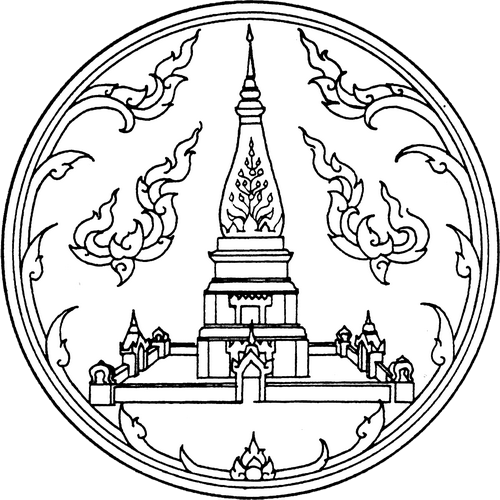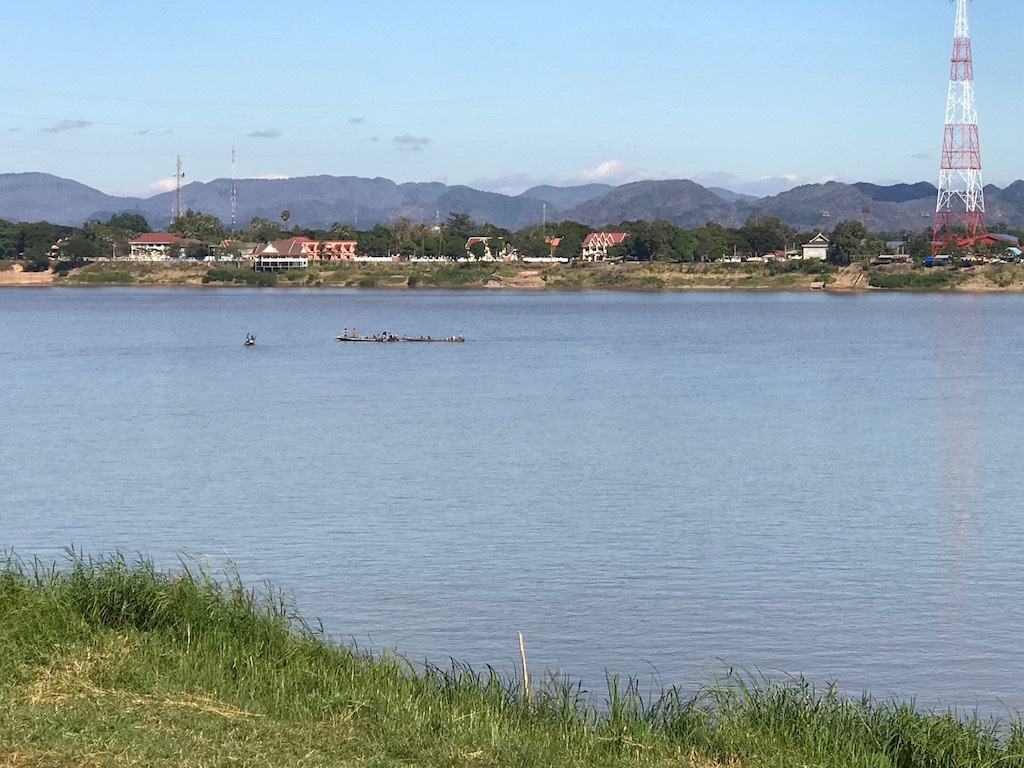About our seal
Our official seal of the province depicts the pagoda of Phra (means monk) That Phanom and is one of the most important Theravada Buddhist structures in the region. It is located in the That Phanom district, approximately one hour drive south of Nakhon Phanom city. This famous pagoda was bulit around 1560 by the Laotian king Setthathirath of Lan Xang Hom Khao (means "million elefants and white parasols").
The kingdom covered most of modern day Laos, Isaan (north east Thailand today). It was surrounded by the kingdom of Ayutthaya, the kingdom of Sukhothai, the kingdom of Lan Na to the west; the Khmer empire to the south and Dai Viet to the east. It had its glory from 1353 to 1707.
Our provincial slogan is "The city of the revered Phra That Phanom, cultural diversity, beautiful Phu Thai ladies, brilliant illuminated boat procession and picturesque Mekong River" and the provincial tree, as well as flower, is Fagraea fragrans.
About our lovely city
The province capital is a rapid growing city with about 30.000 people, a university, many famous temples and landmarks; and its own soon-to-be-international airport (KOP). Nakhon Phanom is divided into 12 districts, 99 Tambon and 1,128 villages.
There are several daily flights from Bangkok Don Mueang airport and bus routes to most provinces runs from the local bus station.
...placeholder - more is coming..
The Climate
Nakhon Phanom has a tropical savanna climate and winters are dry and warm. Summer season is from mid-February to mid-May. The average temperature is 25-35 degrees Celsius and the maximum can be as high as 35-45 degrees Celsius. Temperatures rise until April, and the monsoon season runs from May through October, with heavy rain and somewhat cooler temperatures during the day, although nights remain warm. In general, Nakhon Phanom - in the rainy season - is a province with a high rainfall as it is influenced by the southwest monsoon.
The winter season is from mid-October to mid-February. The weather can be quite cold. The average temperature is 16-25 degrees Celsius and the lowest temperature is in the range of 6 - 15 degrees Celsius and even lower some years.
Read more about the climate here.
The city is located on the bank of the mighty river of Mekong and the scenery is beautiful and nice. Nakhon Phanom is also known for its relaxed environment and good climate.
Nakhon Phanom
The area had been long settled by Lao people and for a long time it belonged to the Lan Xang Hom Khao kingdom. After it came under the control of the kingdom of Ayutthaya, the population remained predominantly Lao speaking. At first it was known as Si Khottrabun (in the Sri Khottrabun period), and during the reign of King Rama I (the first monarch of the reigning Chakri dynasty of Siam; now Thailand) the city was called Marukkhanakhon.
The name Nakhon Phanom, meaning "City Of Hills", was given to the city by King Rama I in 1787. There are no mountains within Nakhon Phanom itself, the limestone mountains being concentrated outside the city of Thakhek (Khammouane or Khammouan province) in Laos, on the other side of the Mekong River. Nakhon Phanom is maybe more accurately described as the city where you can see the mountains.
The province itself is in the Mekong River valley and is mostly plains. Nakhon Phanom covers about 5.512 km2 and is about 3 percent of Isaan. It spreads about 175 km along the Mekong river. Nakhon Phanom province is divided into 12 districts, 99 Tambon and 1,128 villages.
In the north west of the province you will find our 50 km2 hilly national park (Phu Lang Ka, not to be confused with Phu Langka Forest Park), several popular water falls and wild life.
More info about the park and waterfalls here.
Religion and culture
The majority (95%) of people in Nakhon Phanom are Theravada Buddhists (the oldest school of Buddhism), followed by 3.9% Christians and 1.1% other religions.
Read more about Theravada buddhism here.
And here.
The Nakhon Phanom province has about 750.000 people; devided into Thai people of Chinese/Vietnamese descendants and a number of other ethnic groups; Phuthai, Tai Yor, Thai Soh or Thai Kaso, Thai Kalerng, Thai Kah, Thai Saek and Thai Tuan.



